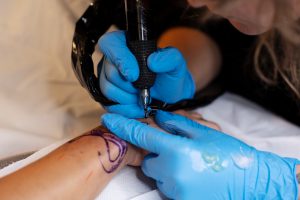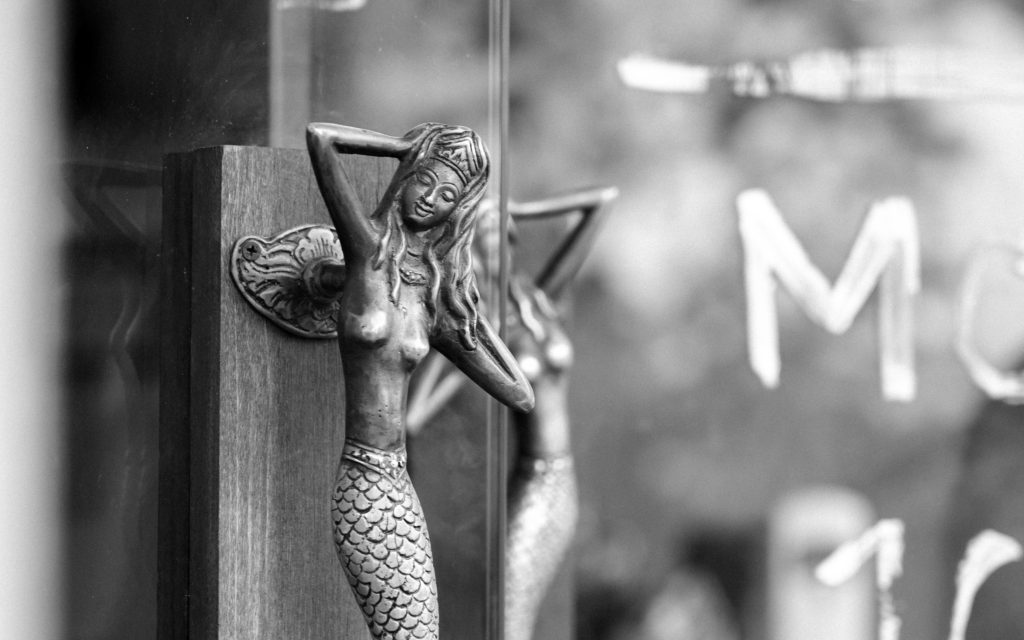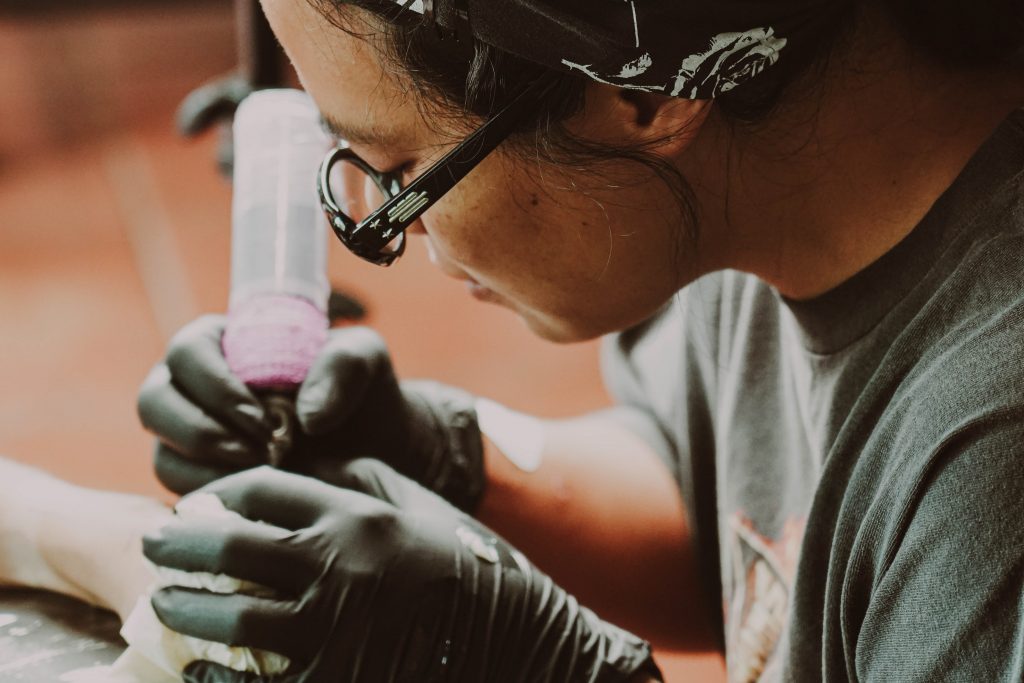Understanding Tattoo Hygiene: What It Really Means
Tattoo hygiene goes far beyond just a clean studio or sterile-looking equipment. It’s a complete system of practices that ensures the entire tattooing process—from preparation to cleanup—is safe for both the artist and the client. Proper hygiene minimizes the risk of infections, allergic reactions, and long-term complications. In a place like Bali, where humidity, heat, and tourism create unique conditions, hygiene must be taken even more seriously.
Cleanliness signals professionalism, but true hygiene is rooted in sterilization, proper equipment handling, safe ink management, and trained artists who follow strict procedures. When all of these elements work together, clients can feel confident that their tattoo experience is safe, sanitary, and worry-free.
The Basics of Tattoo Safety
Sterilization
Any reusable tool that comes into contact with skin or bodily fluids must be sterilized using a medical-grade autoclave, which removes all bacteria, viruses, and microbes. Studios that do not use autoclaves must rely solely on single-use disposable tools, which are discarded immediately after each session.
Sterilization is essential to prevent dangerous infections or bloodborne diseases.
Clean Environment
A hygienic tattoo studio should feel like a clinical space, not a casual art room. This includes:
-
Disinfected workstations before and after each client
-
Clean floors and surfaces free of ink splashes or dust
-
Well-arranged tools and supplies
-
Protective barriers on machines, clip cords, chairs, and other high-touch areas
A clean environment sets the foundation for safe tattooing and reduces the chance of contaminants spreading.
Disposable Equipment
Anything that touches the client’s skin—needles, ink caps, gloves, razor cartridges—should be single-use. These items cannot be reused safely, even with cleaning.
Proper disposable equipment ensures:
-
Fresh, uncontaminated contact surfaces
-
No risk of cross-client infection
-
Consistent quality for each session
Professional studios always open new needles and equipment in front of the client.
Trained Professionals
Tattoo artists are not just illustrators—they are practitioners who must understand hygiene, cross-contamination prevention, and safe handling of bodily fluids.
Trained professionals will:
-
Wash hands thoroughly before and after sessions
-
Wear new gloves at every stage
-
Use fresh ink caps for every client
-
Dispose of sharps safely
-
Avoid touching non-sterile surfaces during the tattoo process
Experience alone is not enough; proper hygiene training is essential.
Common Risks When Hygiene Is Ignored
Failing to follow hygiene protocols can lead to serious health issues. Here are the most common risks:
Local Infections
When bacteria enter the skin during or after tattooing, it can cause:
-
Redness
-
Heat or swelling
-
Pus or cloudy discharge
-
Pain that worsens over time
These infections may require antibiotics and can lead to scarring if untreated.
Cross-Contamination
Cross-contamination occurs when tools, hands, gloves, or surfaces spread bacteria or bodily fluids from one client to another.
It can happen through:
-
Reused needles
-
Dirty ink caps
-
Artists touching their phone or money mid-session
-
Poorly cleaned work areas
This is one of the most preventable—and dangerous—risks.
Allergic Reactions
Inks that are contaminated, past their expiration date, or stored improperly can cause:
-
Rash
-
Swelling
-
Blistering
-
Delayed allergic responses
High-quality studios use reputable ink brands and avoid reusing leftover ink.
Transmission of Bloodborne Diseases
This is the most serious consequence of poor hygiene. Unsafe practices may expose clients to:
-
Hepatitis B
-
Hepatitis C
-
HIV
These infections occur when needles or contaminated surfaces are reused or not sterilized properly. A responsible studio always follows strict bloodborne pathogen protocols to eliminate this risk.
How Bali Tattoo Studios Maintain Hygiene Standards
Studio Environment
- Routine cleaning of floors, benches, and public areas
- Designated sterilization or instrument room (if using reusable tools)
- Good lighting and adequate ventilation where practical
- Visible signage describing hygiene policies—this is a good sign
Equipment Sterilization
- Autoclave: A medical-grade steam sterilizer for metal tools. Clean studios will display autoclave logs or certificates.
- Single-use needles: Best practice is sealed, single-use needles disposed of after every client.
- Machine cleaning: Non-disposable components should be wiped and disinfected; clip cords or grips may be covered with barrier film.
Artist Hygiene Practices
- Wearing new gloves for every client and changing them after touching non-sterile surfaces
- Washing hands with soap or using medical-grade hand sanitizer between steps
- Using new ink caps per client and discarding leftovers
- Proper disposal of sharps into a labelled, secure sharps container
Bali Tattoo Hygiene Checklist for Clients
Use this short checklist to vet a studio before booking or while visiting:
Before You Book
- Check online reviews for mentions of cleanliness and safety.
- Review the studio’s social media for clear photos of the workspace.
- Ask whether the studio uses single-use needles and an autoclave.
- Confirm whether artists follow written hygiene protocols or have local certifications.
At the Studio
- Does the studio smell clean (not chemical or musty)?
- Are needles opened from sealed packages in front of you?
- Is the artist using new ink caps and fresh gloves?
- Are surfaces covered with disposable barrier film or disinfected between clients?
Hygiene Red Flags: Signs You Should Walk Away
If you notice any of these red flags, consider leaving and finding another studio:
| Red Flags | Safe Practices |
|---|---|
| Dirty floors, cluttered benches, or visible grime | Clean, well-lit workspace with tidy workstations |
| Needles removed from unsealed packages or reused | Single-use sealed needles opened in front of you |
| Artist touching phone or money without changing gloves | Artist changes gloves after non-sterile contact |
| No autoclave or sterilization evidence | Autoclave visible or studio provides sterilization logs/certificates |
| Ink jars/containers visibly reused across clients | Fresh ink caps for each client, leftover ink discarded |
Tattoo Aftercare: The Other Half of Hygiene
Why Aftercare Is Just as Important
Your tattoo’s healing phase determines whether the final piece looks crisp and remains healthy. Even the cleanest studio can’t control your aftercare — infections often happen because of poor post-tattoo hygiene.
Step-by-Step Aftercare Guide
- Immediate: Keep the bandage on for 2–4 hours (or as your artist recommends).
- First wash: Gently remove the bandage, wash the area with lukewarm water and mild, fragrance-free soap. Pat dry with a clean towel or paper towel.
- Moisturize: Apply a thin layer of the ointment your artist recommends (usually a specialist tattoo balm) 2–3 times a day.
- Keep it clean: Avoid dirty hands, sand, and public pools. Showering is fine; avoid soaking the tattoo.
- Protect: Avoid direct sun and tanning beds until healed (usually 2–4 weeks). After healed, use sunscreen to protect the ink.
- Do not pick: No scratching, peeling, or picking scabs — this causes scarring and patchy ink.
Products to Avoid
- Alcohol-based cleaners or hydrogen peroxide (they damage tissue)
- Petroleum jelly for extended use (it can suffocate the skin and trap bacteria)
- Scented lotions and creams during the first two weeks
Common Myths About Bali Tattoo Hygiene
Myth #1: Tattoos in Bali Are Always Risky
Reality: Bali hosts many internationally trained artists and studios that adhere to professional hygiene standards. Risk varies by studio — research and observation matter more than location alone.
Myth #2: Tourist Areas Are Less Clean
Reality: Many top-tier studios operate in tourist hubs (Canggu, Seminyak, Ubud). The presence of tourists means studios must maintain high standards — but not all do, so vet carefully.
Myth #3: Humidity Makes Infections Inevitable
Reality: Tropical climate can challenge healing (sweat, saltwater, humidity), but with correct aftercare and studio hygiene, tattoos heal normally. Avoid swimming and heavy sweating during early healing.
Questions You Should Ask Your Tattoo Artist About Bali Tattoo Hygiene
Before you commit, use these direct questions to assess the studio and the artist:
- Do you use single-use, sealed needles for every client?
- How do you sterilize reusable tools—do you use an autoclave?
- Do you keep autoclave logs or certificates available for review?
- What aftercare products do you recommend specifically for Bali’s climate?
- Are you trained/certified in bloodborne pathogen safety or first aid?
- Can I watch you open the needles and inks?
How to Choose a Safe & Hygienic Tattoo Studio in Bali
Research Online
- Look for recent reviews that mention “clean” and “professional.”
- Inspect studio photos — a tidy workspace is a good indicator.
- Check artist portfolios for healed tattoo photos (not just immediately after sessions).
Visit the Studio
- Observe the setup and whether sterilization practices are visible.
- Talk to the artist about their procedures — a professional will answer clearly and confidently.
- Ask to see the sealed needle packages and that ink is poured into disposable cups in front of you.
Compare Quality vs Price
Cheap tattoos can be tempting, but they often skip important steps to cut cost. A slightly higher price at a hygienic, reputable studio is an investment in safety and the long-term look of your tattoo.
The Role of Hygiene Certifications in Bali Tattoo Studios
Local Health Department Requirements
Some studios will display local health department permits or regular inspection certificates. While regulations vary, the presence of visible documentation often indicates that the studio takes sanitation seriously.
International Standard Practices
- Use of gloves and masks during tattooing
- Autoclave sterilization or single-use disposable tools
- Medical-grade disinfectants for surfaces
- Safe sharps disposal and hygiene training for staff
Best Practices for Tattoo Hygiene in Bali’s Tropical Climate
Managing Heat and Sweat
- Stay hydrated and avoid strenuous activities for a few days after tattooing.
- Wear loose, breathable clothing over the tattoo to minimize friction and sweating.
- Schedule tattoos for cooler parts of the day if possible.
Tropical Risks
- Avoid ocean or pool water during the initial healing (usually 2–4 weeks).
- Keep the tattooed area dry and clean when out in humid or crowded places.
Conclusion: Staying Safe and Getting the Best Experience in Bali
Getting a tattoo in Bali can be an amazing experience — culturally rich designs, skilled artists, and vibrant studios. The key to a great outcome is simple: prioritize hygiene. Vet studios before you book, ask the right questions, watch basic safety practices during the session, and follow detailed aftercare instructions. When hygiene and aftercare are both taken seriously, you’ll protect your health and preserve the beauty of your new tattoo for years to come.
- Book a reputable studio — read reviews and view healed work.
- Verify sealed single-use needles and visible sterilization procedures.
- Confirm artist uses new gloves, fresh ink caps, and proper sharps disposal.
- Follow the aftercare plan strictly — no swimming, no sun, no picking.
If you’d like, I can convert this content into a printable one-page checklist, a blog post with images, or split it into a short traveler’s guide for tourists visiting Bali. Just tell me which format you prefer.









